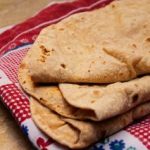
As soon as the tortilla trends video hit my news feed, I watched it and knew I had to find a way to use it in my foods class! Am I glad I did because the “Tortilla Trends: Lesson and Lab” was a huge hit with my students!
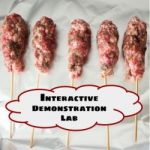
This is a great lab for students to apply food safety skills in the kitchen with or without living and teaching in the world of COVID-19! I have included a possible way to do this lab as an interactive class demonstration, especially if you have some lab restrictions. If times were normal, this recipe is still doable as a class demo or as individual group preparation (just adjust the recipe accordingly). I hope you find this Food Safety Lab: Baked Ground Beef Kabobs helpful in these unprecidented times!
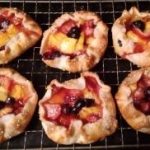
Consumption of fruit in the daily diet is important for all age groups! What’s to love about fruit? A lot actually! Fruit is available in many forms from fresh to frozen to canned and even dried. Fruit is a nutrient dense, low calorie food that can be eaten alone as a snack or incorporated into a meal or dessert. Fruits can be eaten raw or cooked and there are so many to choose from, some more seasonal than others! This fruit lesson focuses on the classification of fruits, how to select quality fruits and explores enzymatic browning. It also features delicious galette labs. Galettes are unique to most students and a little different than making pies, but they are easy to make and amazingly delicious especially with a scoop of vanilla ice cream on top!
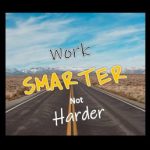
Family & Consumer Science Teachers work harder than almost any other teacher, in my opinion, for many reasons. First, we have a lot of different preps that core subject teachers often do not have. Many of my core colleagues teach the same 2-3 preps all day long while I typically have 5. I know many of you have significantly more! Secondly, if you teach a foods class of any kind, you have additional planning and prep along with grocery shopping to squeeze into your day or week. I don’t know about you, but I am at the point in my teaching career that I would like to work smarter, not harder regularly so that I’m not only sane by the end of the day or week, but still have some patience and energy left to deal with anything that comes up at home or with family. And finally, not spend what seems like every waking moment of evenings and weekends dealing with school work whether it be planning, creating or grading. Since most of us learn best from each other, thus this new feature! Ideally, I’d like to continuously update this post, as well as pose other questions, that inquiring teachers, experienced or inexperienced, may have. I started by including responses I got from a Facebook post, but for this to really work, I’d love to hear from all of you and how you work smarter, not harder! Let’s help each other be more efficient in the classroom! You can share in the comments below or email me at kim@familyconsumersciences.com and I’ll update the post as new information is shared. Additionally, if you have a burning question that you would like me to pose to other teachers, share the same way and I’ll create a post.
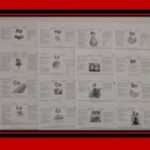
Looking to incorporate the “farm to table” concept into the fruit and vegetable unit of her 9-12 Basic Foods class, Liz Odle, a teacher at North Platte High School, Nebraska did just that by creating the Periodic Table of Fruits & Vegetables project! A colleague helped her iron out the details and the project was created to accommodate new standards as well as 90 minute periods. This lesson is not only informative, but engaging, and when complete, creates a large periodic table display that is hung in the hall for all students to view! See how she teaches this entire unit below.
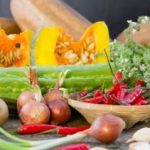
After teaching this unit last year, I knew I had to update my vegetable lessons and activities, especially since we are a 1:1 school with iPads! So, I’ve spent the better part of six months trying to figure out how to make this unit more engaging, both with and without technology! I am super pleased with the results, as are my students! These lessons focus on students’ preexisting knowledge of vegetables, the consumption of vegetables (habits as well as reasons to consume), nutritional value and subgroups and vegetable classifications. Because knife skills are used in the lab options, be sure to cover that information prior to the lab(s)
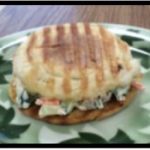
The English Muffin Challenge was a spur of the moment lab! One of our school clubs had two packages of English Muffins left over from an event that they generously donated to us. In addition, I had several left over ingredients from some other labs that I didn’t want to waste. So, I threw it all together for a challenge lab! Students had 40 minutes to create an aesthetic, edible product using the English Muffin and following the parameters of the challenge. Overall, the results were successful, albeit some interesting! However, students walked away knowing they could put together a filling dish, using only available leftovers. The beauty of this type of lab is that the challenge and follow-up assignment could revolve around any food you have an abundance of and wish to use up!

This unique lesson was shared by Steve Watts and Sue Gottsch, from West High School, Sioux City Iowa. Sue teaches food science and other FCS classes. Sue says that the curriculum tends to get boring for the students so she has been trying to add some new labs each year. Their school system has coaches to help with ideas and technology etc. Steve is formerly a science teacher. Together, they decided to plan an interactive meal challenge.
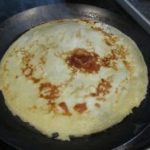
Thinking about some new ideas for middle school labs got me to thinking about a lab I did early in my teaching career when I taught a foreign foods cooking class. At the time we were studying French cuisine and the lab was making homemade CREPES. Initially I was intimidated by crepes because they looked too difficult and fancy, but after working through some demonstrations with my students I found they really were a lot easier to prepare than they looked! Crepes are basically really thin, delicate pancakes filled with a sweet or savory filling. Since I know teenagers love desserts and chocolate is a favorite filling, I thought I would explore a recipe that would combine the two popular ingredients along with fruit and work a creative crepe lab back into the curriculum.
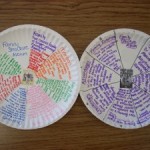
After teaching several lessons on family structures, family functions, and family life cycle stages, I use this lesson/project as a way for students to review and apply information learned as well as a way for me to assess their learning. Students select a television family and create a TV Paper Plate Project using their knowledge of family to complete it. Students use mobile labs to research any unknown information about their TV family such as names of all family members or jobs TV parents held, etc.